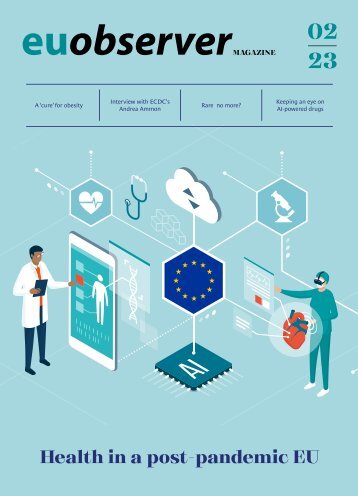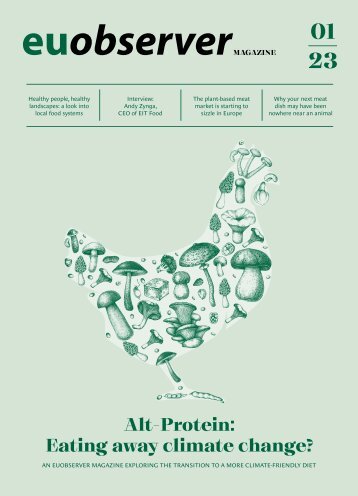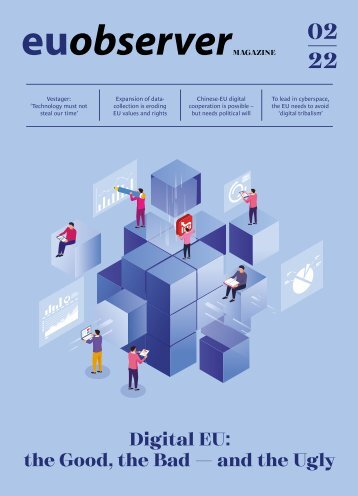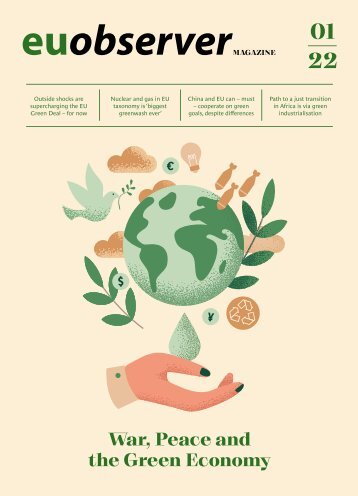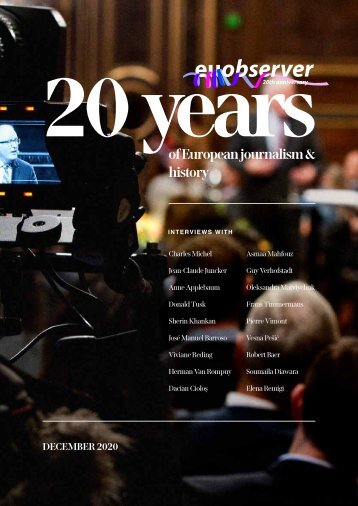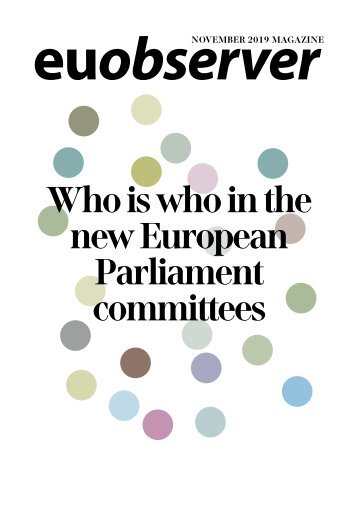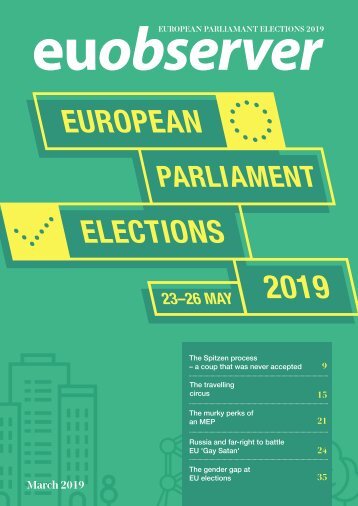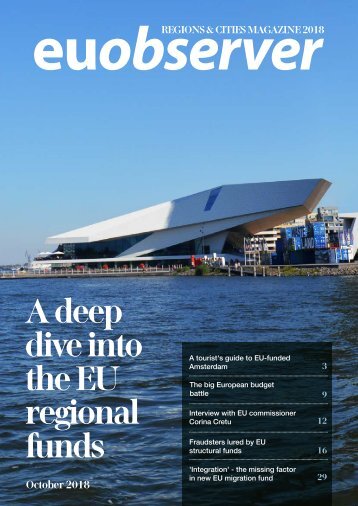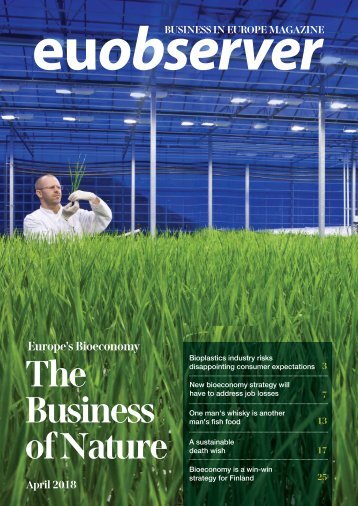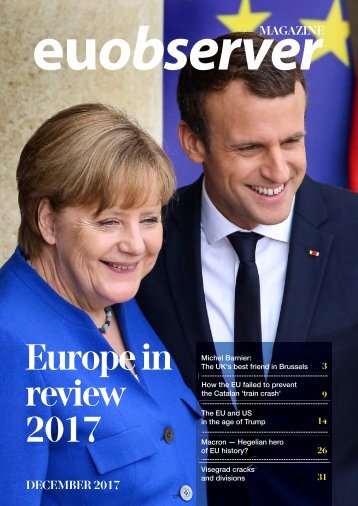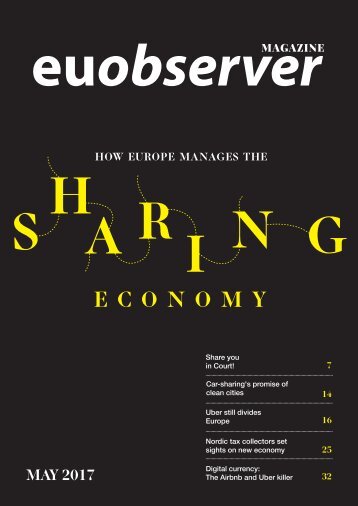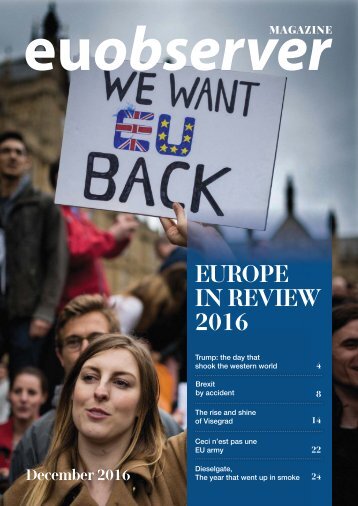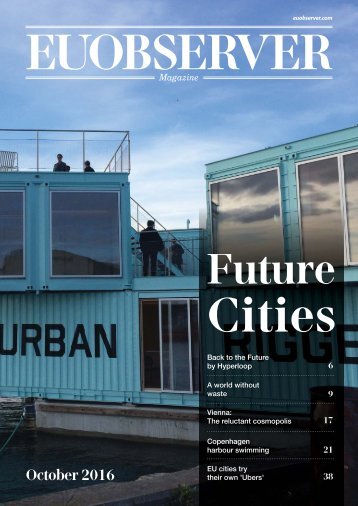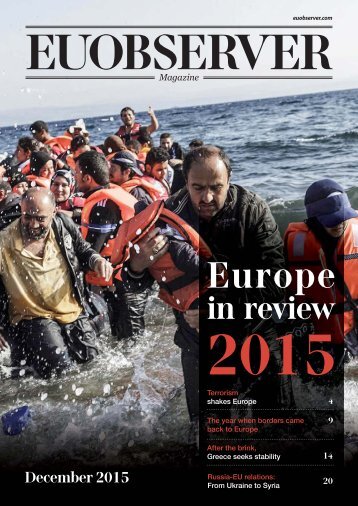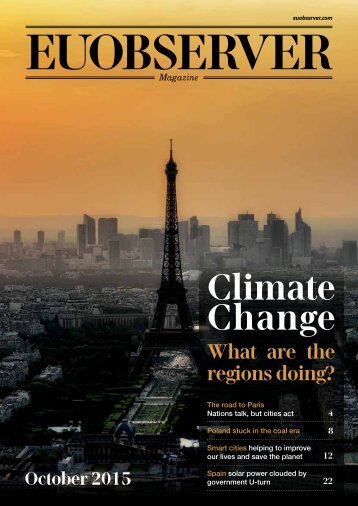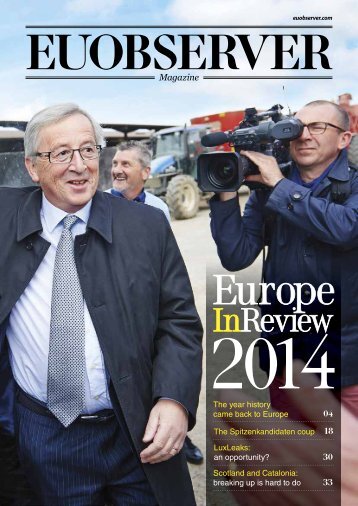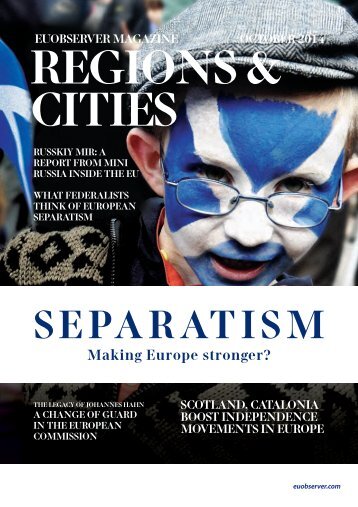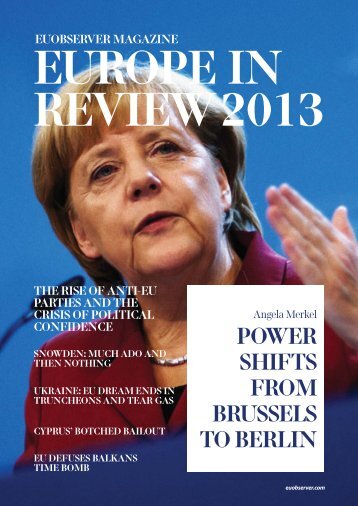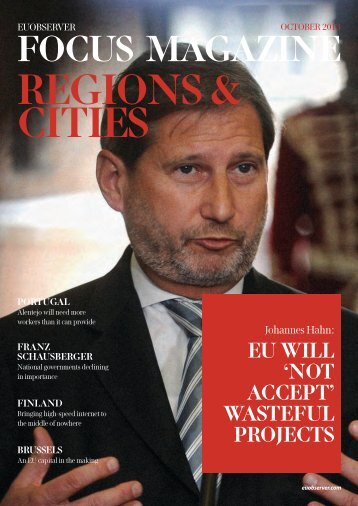Regions & Cities 2012: Economic Crisis & Austerity
- Text
- Euwrc
- Donetsk
- Europe
- Culture
- Growth
- Silesia
- Denmark
- Cities
- Catalan
- Croatia
- Economy
- Crisis
- Austerity
- Regions
- Cities
- Brussels
- Euobserver
SAMSO – DENMARk’s
SAMSO – DENMARk’s pIONEERING ISlAND Samso is a pioneering Danish island - it became energy independent in 2008, but people are not in it “for the environment.” By: Honor Mahony In 1997 SAMSO IslAND wON a COMpetitION. The prize? Showcasing Denmark’s capacity for renewable energy. It was a low key affair. Winning entailed a meeting with the then energy minister. Neither extra resources, technology or money were part of the prize. Just over 10 years later the island - tucked away in the Kattegat Strait in the Baltic Sea - has become 100 percent energy independent. Wind turbines provide all its electricity. Seventy percent of islanders heat their homes and their water using centralised systems run on wood or straw. The 4,300 residents – known as “Samsingers” – are carbon neutral. Or, to be exact, their carbon footprint is minus 3.7 tonnes. There are plans for the island to be entirely fossil-fuel-free by the end of this decade. Vehicles – including trucks and tractors – are to run on methane gas. An electric bus system should be in place within the next year. So how was it possible to get from energyimporting A to energy-independent B? What it did not involve was mass popular conversion to all things green. In fact, being evangelical about sustainable energy was likely to be viewed with suspicion. What won Samsingers round was the twin forces of enlightened self-interest and a singularly persuasive local. That local was Soren Hermansen. Son of island farmers, Hermansen first trained as a farmer and then worked as an environmental studies teacher. He saw the potential of the small windy island from the beginning. He provided the opening to locals. An engineer was able to answer the technical questions. The hard task was to win around conservative islanders. It involved going to many local meetings. The message was tailored to the fisherman audience in the southwest, to the farmers in the south and the independentminded locals of the northern community. That the island is only 114km square with 22 villages was of no matter. “So we were two guys working on it ... Samso is not one community – it is several communities. We took one area at a time,” Hermansen said. The worries were practical. People wanted to know: “What’s in it for them. Whether they can save money on their bills.” Some signed up to the idea immediately. Others were sceptical. But the majority was eventually convinced. By 2001,the island had cut its fossil fuel use by half, four years later it was producing more renewable energy than it needed. There are now 11 on-shore wind turbines providing the island’s electricity. Ten off-shore turbines offset the island’s transportation needs - the three ferries serving Samso guzzle oil. Soren Hermansen - “Why big politics often gets stuck is because people want to do everything” Over €60 million has been spent since the project began, 70 percent of which was private investment by islanders. The dividends come in the form of lower fuel bills and cheques for those who took out shares in the turbines. An foreseen but welcome spin-off are the 6,000 visitors coming each year to admire and learn about the island’s evolution to energy self-sufficiency. Hermansen credits the islanders for the success of the project. But it was also down to keeping the aim of the project realistic and in touch with what local people wanted. “You have to look at each area and see ... what are the strengths of the different areas. Why big politics often gets stuck is because people want to do everything - it gets too big and then people cannot absorb it. “Better to go down to a lower level and focus on local and regional development.” A view of the island - Samso became energy independent in 2008 Photo: Jeppe Jensen 10 OCTOBER 2012 REGIONS & CITIES
SILESIA’S GENES FOR SUCCESS For the seventh time in a row Silesia (Śląskie) has been ranked as the most attractive investment location in Poland. The Katowice Special Economic Zone has created tens of thousands of new jobs in 35 cities of the province. The region inhabited by 4.6 million people, has the highest population density in Poland and is the most urbanized area in Central Europe. Traditional work ethos is a good mark of the people who have worked here in industry for generations. Silesia has a workingage population of over 3 million. The province’s active business networks and dynamic market are the product of true team work. The 45 universities and colleges of Śląskie province tutor almost 200,000 students, with 60% of them studying for degrees in engineering and economics. Silesia is one of Poland’s leading centres for R&D. The first artificial heart or design initiatives are the showpieces of our creative potential. An innovative approach to business contributes to success of the firms, which operate in the province. There are 18 industry and technology parks operating in the energy, automation, electronics and construction sectors. Over 2 million creative people living in 14 cities of the so-called Silesia Metropolis create the region’s positive energy. Silesia’s densest network of expressways and motorways in Poland completes the offer. The cities of the conurbation are interconnected by a multi-lane transit road. Katowice Airport is the largest regional airport for cargo traffic in Poland. The railway terminal in Sławków is the westernmost point of the broad-gauge railway line, which connects Silesia to the Asian and Far Eastern transport system. Śląskie province has always been a strong pillar of Polish economy. Main fields of activity of the Regional Office of Silesia in Brussels • Regional policy • Transport • Energy and environment • Agriculture • Education & Culture • Social issues (CSR, Active Ageing, etc.) Director: Magdalena Chawuła-Kosuri Contact details: Regional Office of Silesia in Brussels 3, rue du Luxembourg, 1000 Brussels, Belgium tel.: +32 2 514 77 67, fax: +32 2 218 77 77 brws.bruksela@silesia-region.pl, www.silesia-europa.pl
- Page 1 and 2: EUOBSERVER OCTOBER 2012 FOCUS MAGAZ
- Page 3 and 4: REGIONS FEEl the pINCh Central gove
- Page 5 and 6: SuStainable CitieS Master of Scienc
- Page 7 and 8: Donetsk Governor Andrey Shishatskiy
- Page 9: Meanwhile, academics note that the
- Page 13 and 14: OCTOBER 2012 REGIONS & CITIES 13
- Page 15 and 16: CultURE INCREASINGly SEEN AS path t
Inappropriate
Loading...
Mail this publication
Loading...
Embed
Loading...
